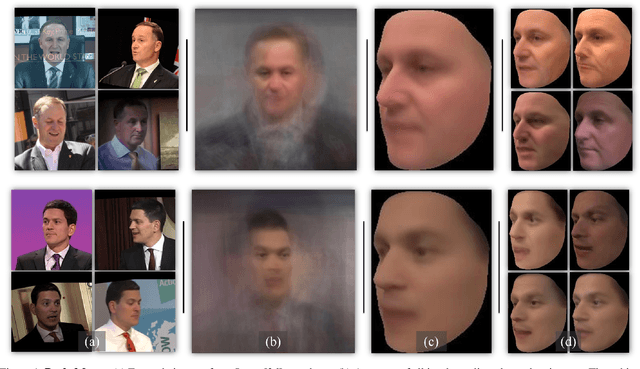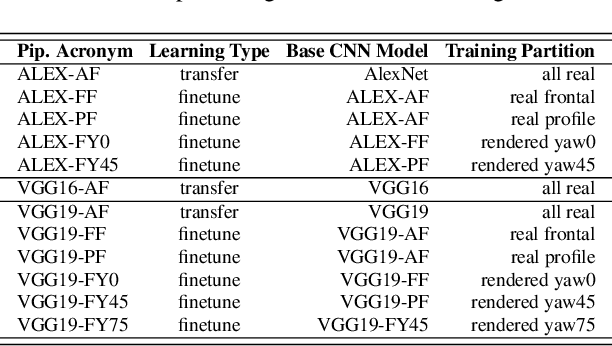Shai Harel
Pooling Faces: Template based Face Recognition with Pooled Face Images
Jul 06, 2016



Abstract:We propose a novel approach to template based face recognition. Our dual goal is to both increase recognition accuracy and reduce the computational and storage costs of template matching. To do this, we leverage on an approach which was proven effective in many other domains, but, to our knowledge, never fully explored for face images: average pooling of face photos. We show how (and why!) the space of a template's images can be partitioned and then pooled based on image quality and head pose and the effect this has on accuracy and template size. We perform extensive tests on the IJB-A and Janus CS2 template based face identification and verification benchmarks. These show that not only does our approach outperform published state of the art despite requiring far fewer cross template comparisons, but also, surprisingly, that image pooling performs on par with deep feature pooling.
Face Recognition Using Deep Multi-Pose Representations
Mar 23, 2016



Abstract:We introduce our method and system for face recognition using multiple pose-aware deep learning models. In our representation, a face image is processed by several pose-specific deep convolutional neural network (CNN) models to generate multiple pose-specific features. 3D rendering is used to generate multiple face poses from the input image. Sensitivity of the recognition system to pose variations is reduced since we use an ensemble of pose-specific CNN features. The paper presents extensive experimental results on the effect of landmark detection, CNN layer selection and pose model selection on the performance of the recognition pipeline. Our novel representation achieves better results than the state-of-the-art on IARPA's CS2 and NIST's IJB-A in both verification and identification (i.e. search) tasks.
Effective Face Frontalization in Unconstrained Images
Nov 28, 2014



Abstract:"Frontalization" is the process of synthesizing frontal facing views of faces appearing in single unconstrained photos. Recent reports have suggested that this process may substantially boost the performance of face recognition systems. This, by transforming the challenging problem of recognizing faces viewed from unconstrained viewpoints to the easier problem of recognizing faces in constrained, forward facing poses. Previous frontalization methods did this by attempting to approximate 3D facial shapes for each query image. We observe that 3D face shape estimation from unconstrained photos may be a harder problem than frontalization and can potentially introduce facial misalignments. Instead, we explore the simpler approach of using a single, unmodified, 3D surface as an approximation to the shape of all input faces. We show that this leads to a straightforward, efficient and easy to implement method for frontalization. More importantly, it produces aesthetic new frontal views and is surprisingly effective when used for face recognition and gender estimation.
 Add to Chrome
Add to Chrome Add to Firefox
Add to Firefox Add to Edge
Add to Edge